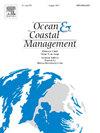High resolution seascape visibility tool for aquaculture marine spatial planning
IF 4.8
2区 环境科学与生态学
Q1 OCEANOGRAPHY
引用次数: 0
Abstract
Aquaculture is recognized as the fastest-growing animal production system worldwide. However, it often encounters public opposition due to the visual impact of fish farm infrastructures, which represents a significant constraint in policy decisions related to the allocation of marine areas for aquaculture development. This study presents the r.wind.sun_aqua tool, an adaptation of the open-source r.wind.sun module for GRASS GIS, designed to identify marine areas suitable for aquaculture based on visual impact, thereby supporting the integration of aquaculture development within the landscape. The tool combines viewshed analysis with a quantification of distortion of observed objects in the visual field, generating a Non-dimensional visual impact Index (NI) to represent human perception of aquaculture structures. A high-resolution LiDAR Digital Surface Model (DSM) is used as input, ensuring precise and reliable evaluations.
The tool was tested in the Gulf of Gaeta (Italy), an area that hosts, among others, fish and shellfish aquaculture, tourism, high-value landscapes, and cultural heritage sites. The average NI was calculated for the locations of existing fish farms and four potential new aquaculture sites. Based on high-resolution NI maps, existing fish farms were found to have a greater impact on the seascape visibility of the Gulf of Gaeta compared to the proposed new farming sites.
The r.wind.sun_aqua tool proved effective in assessing and quantifying the visual impact of fish farming facilities on coastal landscapes. It is currently being developed into a user-friendly, open-source QGIS plugin to assist non-experts in analysing the visual impact of aquaculture on coastal areas.
水产养殖海洋空间规划的高分辨率海景可视性工具
水产养殖被公认为世界上发展最快的动物生产系统。然而,由于养鱼场基础设施的视觉影响,它经常遭到公众的反对,这是与分配海洋区域用于水产养殖发展有关的政策决定的重大制约因素。这项研究提出了r.s wind。sun_aqua工具,是GRASS GIS对开源r.wind.sun模块的改进,旨在根据视觉影响确定适合水产养殖的海洋区域,从而支持水产养殖发展与景观的整合。该工具将视域分析与视野中观察到的物体的失真量化相结合,生成一个非维度视觉影响指数(NI),以表示人类对水产养殖结构的感知。使用高分辨率激光雷达数字表面模型(DSM)作为输入,确保精确可靠的评估。该工具在加埃塔湾(意大利)进行了测试,该地区拥有鱼类和贝类水产养殖、旅游业、高价值景观和文化遗产。计算了现有养鱼场和四个潜在的新水产养殖场地点的平均NI。根据高分辨率的NI地图,现有的养鱼场对加埃塔湾海景能见度的影响比拟议中的新养鱼场更大。r.wind。Sun_aqua工具在评估和量化养鱼设施对沿海景观的视觉影响方面证明是有效的。它目前正在发展成为一个用户友好的、开放源码的QGIS插件,以协助非专家分析水产养殖对沿海地区的视觉影响。
本文章由计算机程序翻译,如有差异,请以英文原文为准。
求助全文
约1分钟内获得全文
求助全文
来源期刊

Ocean & Coastal Management
环境科学-海洋学
CiteScore
8.50
自引率
15.20%
发文量
321
审稿时长
60 days
期刊介绍:
Ocean & Coastal Management is the leading international journal dedicated to the study of all aspects of ocean and coastal management from the global to local levels.
We publish rigorously peer-reviewed manuscripts from all disciplines, and inter-/trans-disciplinary and co-designed research, but all submissions must make clear the relevance to management and/or governance issues relevant to the sustainable development and conservation of oceans and coasts.
Comparative studies (from sub-national to trans-national cases, and other management / policy arenas) are encouraged, as are studies that critically assess current management practices and governance approaches. Submissions involving robust analysis, development of theory, and improvement of management practice are especially welcome.
 求助内容:
求助内容: 应助结果提醒方式:
应助结果提醒方式:


